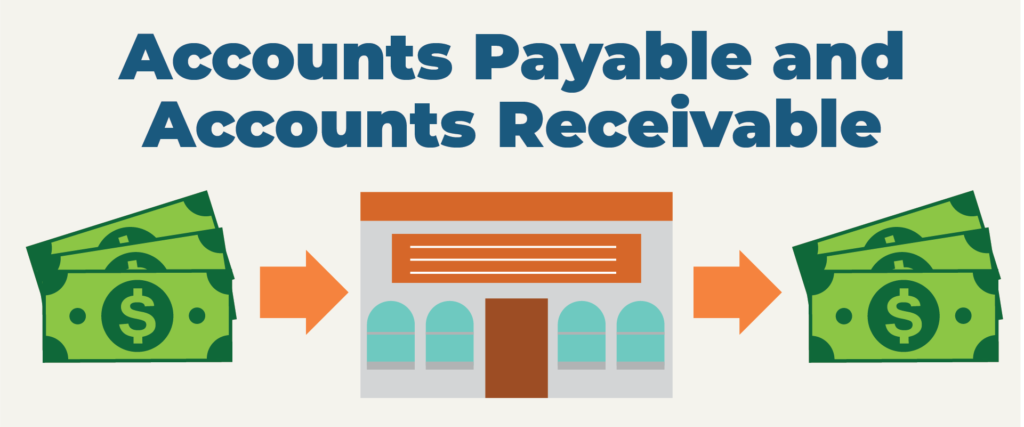
In today’s business landscape, understanding financial management concepts like accounts receivable and accounts payable examples is essential for smooth operations. This guide dives into their definitions, real-world examples, and how they impact businesses.
What are Accounts Receivable and Accounts Payable?
- Accounts Receivable (AR): These are the funds owed to a company by its customers for products or services sold on credit. For example, if a company sells goods worth $10,000 to a customer on credit, that $10,000 becomes part of its accounts receivable.
- Accounts Payable (AP): These are the funds a company owes to its suppliers or vendors for goods or services purchased on credit. For example, if a business purchases office supplies worth $5,000 on credit, it becomes part of its accounts payable.
Both AR and AP are integral to the cash flow cycle and ensure smooth financial operations.
Importance of Accounts Receivable and Accounts Payable
- Cash Flow Management: Efficient management ensures a balance between incoming and outgoing cash flows.
- Building Trust: Prompt payment of accounts payable builds strong supplier relationships, while efficient accounts receivable processes ensure customer satisfaction.
- Financial Health Indicator: They reflect the company’s ability to manage short-term obligations and credit policies.
Accounts Receivable Examples
- Retail Industry:
A clothing store offers customers a 30-day credit for purchases. If a customer buys $500 worth of clothing and opts for the credit option, the $500 becomes the store’s accounts receivable. - Service-Based Business:
A marketing agency provides a client with a $10,000 campaign service on credit. Until the client pays, this amount is part of the agency’s accounts receivable. - Healthcare Providers:
A hospital provides treatments worth $2,000 and bills the patient’s insurance company. The $2,000 becomes accounts receivable until paid.
Accounts Payable Examples
- Manufacturing Industry:
A factory purchases raw materials worth $20,000 on credit from a supplier. This amount is recorded as accounts payable until it is paid off. - Tech Companies:
A software company buys hardware worth $5,000 from a vendor with a payment term of 45 days. The $5,000 remains as accounts payable until cleared. - Small Businesses:
A bakery orders $3,000 worth of ingredients on credit. This amount is recorded as accounts payable until settled.
Key Differences Between Accounts Receivable and Accounts Payable
| Aspect | Accounts Receivable | Accounts Payable |
|---|---|---|
| Definition | Money owed to the company by customers | Money owed by the company to suppliers |
| Classification | Asset | Liability |
| Examples | Customer invoices for credit sales | Vendor bills for credit purchases |
| Impact on Cash Flow | Inflows of cash | Outflows of cash |
How to Manage Accounts Receivable and Accounts Payable Effectively
- Accounts Receivable Management Tips:
- Offer discounts for early payments.
- Automate invoicing to avoid delays.
- Regularly follow up with customers on outstanding payments.
- Accounts Payable Management Tips:
- Negotiate favorable payment terms with suppliers.
- Prioritize payments to avoid late fees.
- Use accounting software to track due dates.
Real-Life Applications
- Startup Example:
A tech startup provides services to a corporate client and invoices $50,000 with a 60-day credit term. This amount is recorded as accounts receivable. - Enterprise Example:
A large enterprise buys office furniture worth $200,000 on a 90-day credit term. This amount is logged as accounts payable.
Both scenarios highlight the vital role of accounts receivable and accounts payable examples in maintaining a company’s liquidity.
Challenges in Managing AR and AP
- Accounts Receivable Challenges:
- Late payments from customers.
- Errors in invoicing.
- Maintaining accurate records.
- Accounts Payable Challenges:
- Overlooking payment deadlines.
- Managing vendor disputes.
- Balancing cash flow to meet obligations.
Benefits of Automating AR and AP
- Improved Accuracy: Automation reduces errors in recording transactions.
- Time Efficiency: Streamlines invoicing and payment processes.
- Enhanced Reporting: Provides real-time insights into cash flow and outstanding balances.
Conclusion
Understanding accounts receivable and accounts payable examples is crucial for businesses aiming to maintain financial health. By effectively managing AR and AP, companies can ensure smooth cash flow, foster better relationships with stakeholders, and improve operational efficiency. Using modern tools and strategies to optimize these processes is the key to sustainable growth.
FAQs on Accounts Receivable and Accounts Payable Examples
1. What is an example of accounts receivable?
An example is a marketing agency invoicing a client $15,000 for services rendered with a payment term of 30 days. The $15,000 is accounts receivable until paid.
2. What is an example of accounts payable?
An example is a manufacturing company purchasing machinery worth $25,000 on credit. This amount is recorded as accounts payable until the payment is made.
3. How are accounts receivable and accounts payable related?
Both are vital components of a business’s cash flow. Accounts receivable represent money coming in, while accounts payable represent money going out.
4. Why is it important to manage accounts receivable and accounts payable?
Efficient management ensures financial stability, strengthens relationships with customers and vendors, and prevents cash flow issues.
5. Can the same transaction be both AR and AP?
Yes, in intercompany transactions where one branch records AR and another records AP for the same amount.
